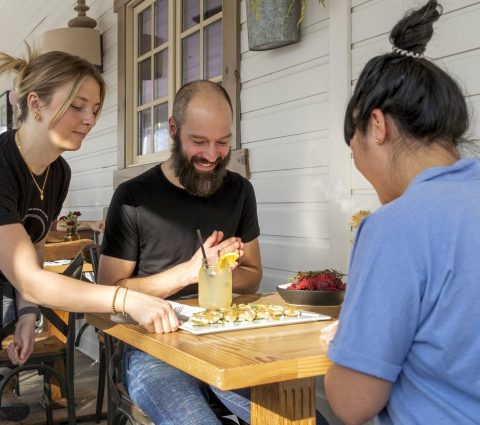- Things To Do
- Events
- Food & Drink
-
Places To Go
- Winnipeg
- Churchill
- Eastern Region
- Central Region
- Interlake Region
- Parkland Region
- Western Region
- Manitoba North
- Must-See Destinations
-
Itineraries
- Island Getaway on the Prairies
- Wheat City Wanderings in Brandon
- Escape to the water and the wild
- St. Boniface Winter: Passion and History
- Follow the path to a story in Neepawa
- Unleash your inner Viking this winter
- Explore Clear Lake this winter like never before
- Breathe in the Whiteshell this winter
- Go North for a boreal forest escape
- Treaty Areas
- Where To Stay
- Trip Essentials
- #ExploreMB Blog
Navigation Options
- FREN
- Things To Do
- Events
- Food & Drink
-
Places To Go
- Winnipeg
- Churchill
- Eastern Region
- Central Region
- Interlake Region
- Parkland Region
- Western Region
- Manitoba North
- Must-See Destinations
-
Itineraries
- Island Getaway on the Prairies
- Wheat City Wanderings in Brandon
- Escape to the water and the wild
- St. Boniface Winter: Passion and History
- Follow the path to a story in Neepawa
- Unleash your inner Viking this winter
- Explore Clear Lake this winter like never before
- Breathe in the Whiteshell this winter
- Go North for a boreal forest escape
- Treaty Areas
- Where To Stay
- Trip Essentials
- #ExploreMB Blog

This fall, we're featuring an amazing collection of road trips that will help you explore every corner of Manitoba. The Journey to Churchill road trip takes you up the eastern side of Lake Manitoba, north to Thompson and then to the polar bear capital of the world, Churchill as you travel through Treaty 1, 2 and 5 territories. Take one part of the itinerary for a day trip, or combine them for a multi-day trip.
Part one
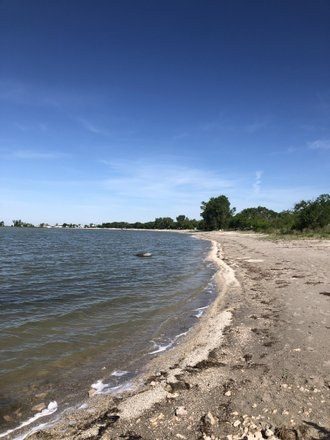
Lundar
Be sure to stop at Lundar, Manitoba. Here, you'll find Lundar Beach Provincial Park where you can explore one of Manitoba's natural marshlands. Lake Manitoba is home to a healthy population of birds which include pelicans, songbirds and ducks. Spend a day on the beach (if the weather allows) where the sunsets over the lake can't be beat! While there, peek in to see Manitoba's largest goose. Situated along the north-south flyway, the goose rests upon a revolving mount that turns with the wind.
Ashern
Take a short detour north to the town of Ashern, "Land of the Sharptail Grouse". The statue represents the bounty of birds found in the area, and the many opportunities for grouse hunting.
PART TWO
Steep Rock
Take a short detour off HWY 6 to Steep Rock, easily one of the most popular and most photographed spots in Manitoba. Flock to the shores of Lake Manitoba, where impressive cliffs tower over the lake below. Here thousands of years of waves lapping against limestone have created unique rock formations.
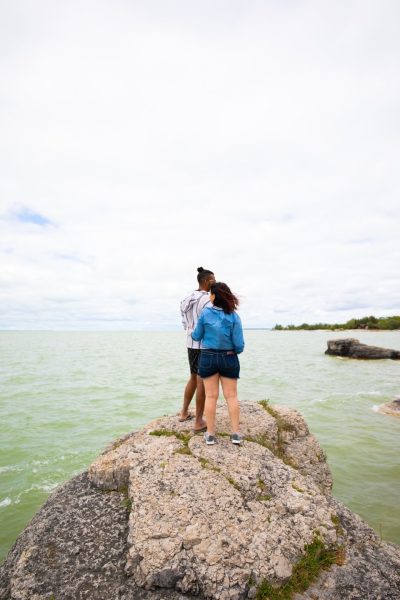

Little Limestone Lake
This stunning lake found at the northern tip of Lake Winnipeg, along a remote stretch of Hwy 6 through traditional territory of Mosakahiken Cree Nation, is on record to be the largest and most dramatically colour-changing marl lake in the world. Depending on the heat of the day, the colour can change from vibrant turquoise to calming robin’s egg blue due to increasing levels of calcite from the lake’s limestone bottom. Travellers to this provincially protected area need to be resourceful and adventurous as there are limited services and amenities to guide your way, whether you’re exploring by paddling, fishing or hiking.
Paint Lake
The pristine boreal wilderness of Paint Lake easily rivals the beauty of the Whiteshell and Nopiming in southern Manitoba. Better yet, it is more off the beaten path. At the park’s heart is Paint Lake Marina, the largest in Manitoba, where anglers and avid boaters meet. Spend the night at Paint Lake Lodge. This family-run resort offers all-season vacation cabin rentals and one of the tastiest kitchens in the North. Explore the shaded Coffee Cove Hiking Trail that takes you through a forested rocky outcrop.
Pisew Falls
The profile of Pisew Falls Provincial Park, can’t be missed thanks to its Insta-worthy waterfall. You can hear the falls as soon as you exit your car in the parking lot; just follow your ear down a short boardwalk to two viewing platforms to take in the awesome site. Pisew, which means lynx in Cree, is where the Grass River drops 13 meters, switches directions and plunges through a gorge. Once you’ve got your fill of these falls, head over to the 0.5 km trail that leads to lower Pisew Falls, where a rotary bridge offers views of more rapids.
Another option for the very adventurous is the 30 km (return) Pisew-Kwasitchewan hike that starts at the end of the rotary bridge and is considered one of the most challenging backcountry trails in Manitoba. The rugged terrain leads hikers down the Grass River, a route travelled for thousands of years by Indigenous peoples and then during the late 1700s fur trade by Hudson Bay and Northwest Company men. Camping is allowed at designated sites, so plan to overnight when you reach the awesome climax of Kwasitchewan Falls, Manitoba’s highest waterfall (14 meters).
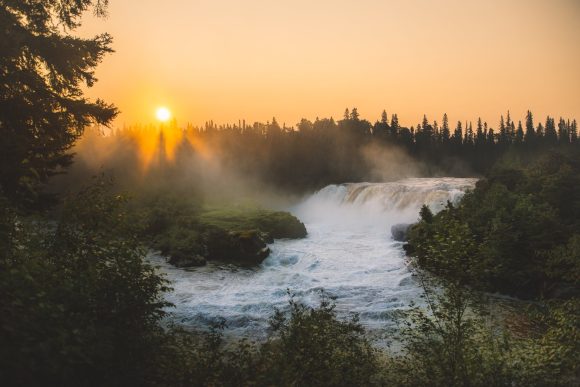
Travel Manitoba
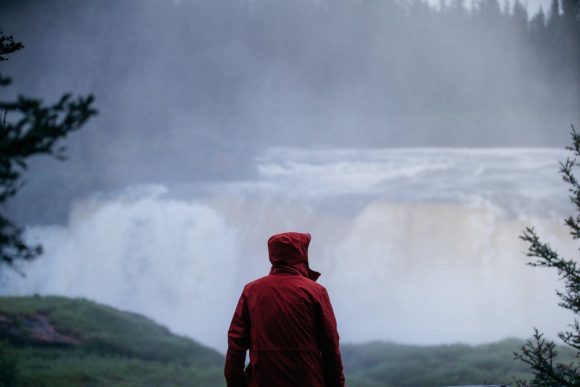
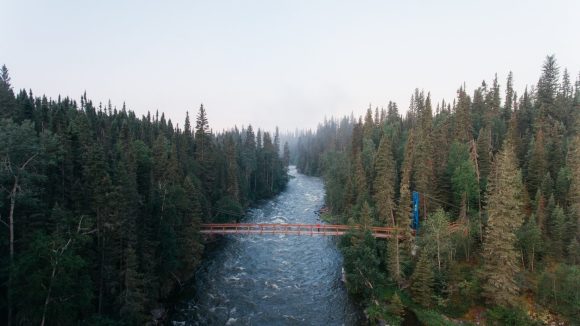
Sasagiu Rapids
Just beyond Pisew Falls lies Sasagiu Rapids Provincial Park part of the Grass River system; a waterway with historical relevance to Canada’s fur trading past. If you’re looking for a place to stay while in Sasagiu, you’ll receive a warm welcome at Sasagiu Rapids Lodge, where you can take in an afternoon boat ride on stunning Setting Lake with views of the boreal forest enfolding both sides of the lake. The parks rapids, opportunities for fishing, flora and fauna – lookout for the beaver dams along the lake and eagles flying overhead – abound. The lodge’s restaurant serves up delicious, authentic Thai cuisine with traditional dishes made from scratch and served in rustic surroundings.
Thompson
At last, set your feet in the northern town of Thompson, famous for its nickel mines and nearby wolf population. Start your visit at the Heritage North Museum to discover the heart of Thompson’s identity. Not only will you see much of the wildlife native to the area housed in this grand spruce wood log structure, you will also gain a better understanding of how this mining town came to be. Located behind the museum is the Spirit Way Trail, a curated pathway and biking trail through the heart of Thompson that takes visitors past 16 points of interest, wolf statues and the iconic 10-storey wolf mural of a Robert Bateman painting that helps the city earn its moniker ‘the wolf capital of the world.’ Plan for about two hours to take in the sites along the two km path.
Indigenous spirit and generosity resonates through Manitoba’s North and a visit to Thompson offers an authentic way to appreciate Indigenous culture. For one-of-a-kind souvenirs, the Arctic Trading Post in City Centre Mall is the place to pick up soapstone or ivory carvings, hand-made leather mukluks, slippers and mitts, and custom beaded jewellery. Jasyn Lucas (@jacynlucas) is a well-known Cree painter, tattoo artist and muralist based in Thompson; his contemporary Indigenous art decorates buildings around town in his signature Northern Lights, wildlife and landscape scenes.
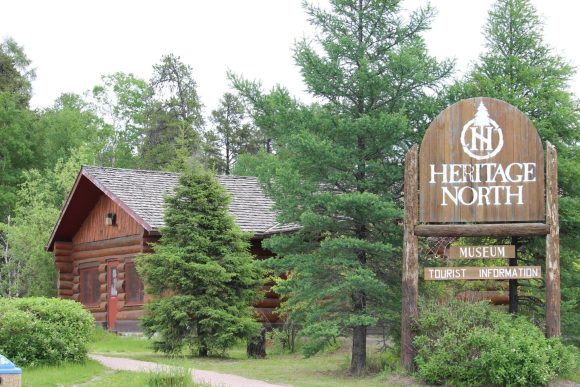
PART THREE
Churchill
It’s time to hop aboard the train north. There are no roads to leading to the tiny town of Churchill (home to about 800 residents, 1000 polar bears and in the summer, about 57,000 beluga whales). The overnight train journey travels only 260 km but takes about 16 hours due to the uneven terrain created by the permafrost that exists below. So sit back and relax as you watch the wildlife and scenery pass you by as you traverse over boreal terrain into the taiga and Churchill’s sub-arctic wilderness.
Upon arrival in Churchill, there are numerous options for exploring the history, culture and wildlife of this bucket-list destination.

Wildlife
Every year from mid-October to mid-November, something extraordinary happens on the shores of the Hudson Bay. As the temperatures begin to dip, polar bears gather in large numbers, waiting for the ice to freeze so that they can begin their seal hunt. This fall, Churchill's tour operators are welcoming fully vaccinated visitors to join in on the wildlife trip of a lifetime. Check out these seven amazing trips and make your way north.

Churchill Beyond Wildlife
Northern Lights
While peak northern lights season occurs from January to March, Churchill sees the sky light up with the aurora borealis 300 days a year, which means there's a pretty good chance you'll see them on your fall trip to Churchill. The trick is to download the aurora app to track activity, keep an eye on the forecast (clear skies are necessary) and be prepared to stay up late or set an alarm for the middle of the night when the sky is at its darkest.

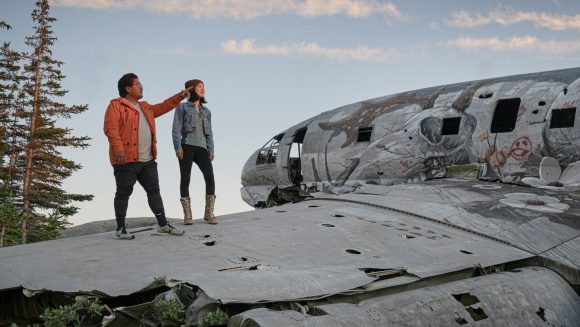

Itsanitaq Museum
This unassuming museum is open year-round and features one of the world's finest collections of Inuit carvings and artifacts. These delicate and intricate works of art date back to Pre-Dorset (1700 BC) times. Open Monday to Tuesday and Thursday to Saturday, 1:00 pm - 4:30 pm.
Sea walls murals
Initiated and led by celebrated Manitoban artist Kal Barteski, SeaWalls CHURCHILL is a collection of murals that not only inspire but also educate on the need to protect the world's oceans. The murals can be accessed by a self-guided driving tour.
Shopping
Don't leave Churchill without finding that perfect trip keepsake. Must-shops include the Arctic Trading Company, Fifty Eight North and Wapusk General Store.
